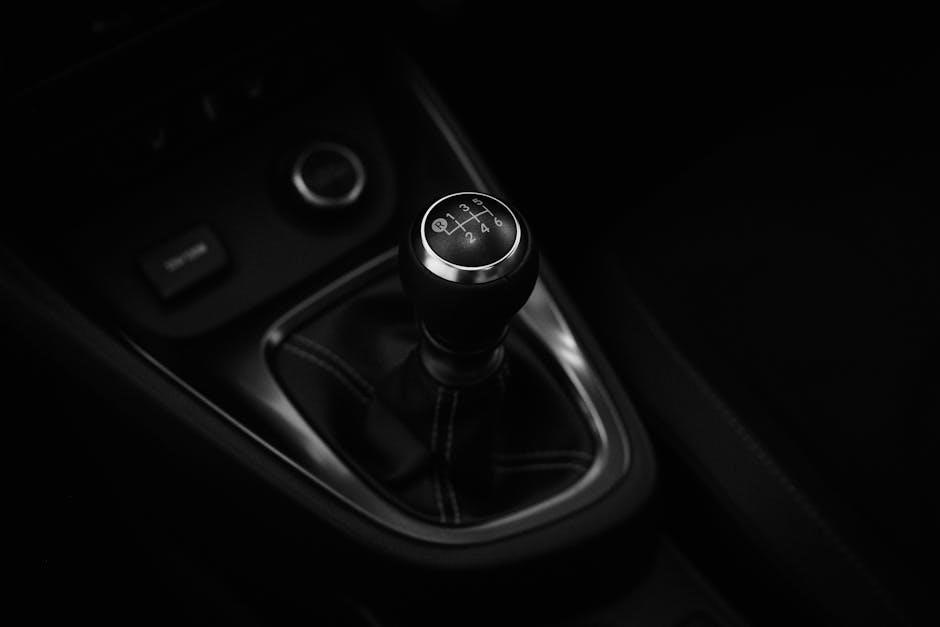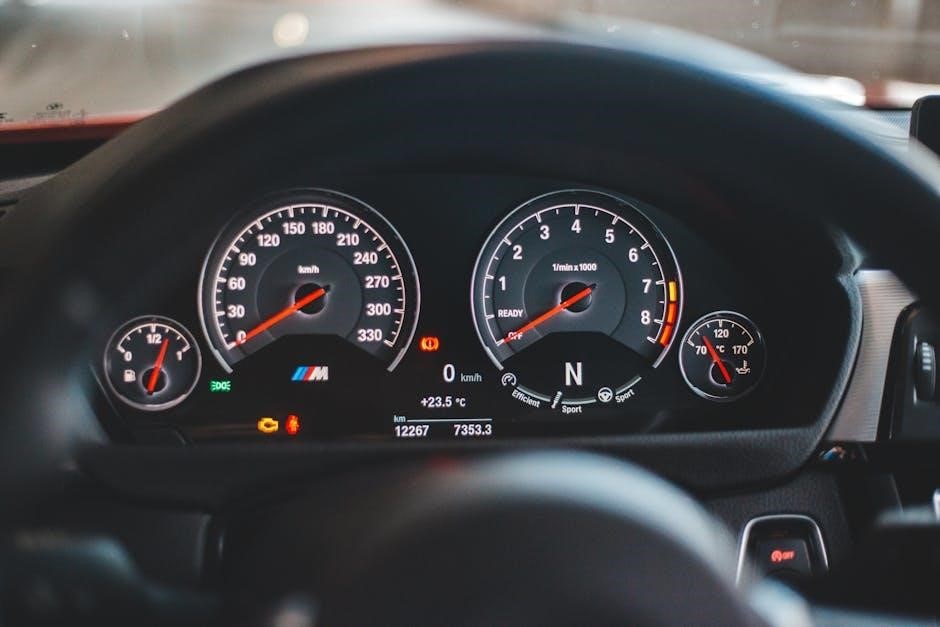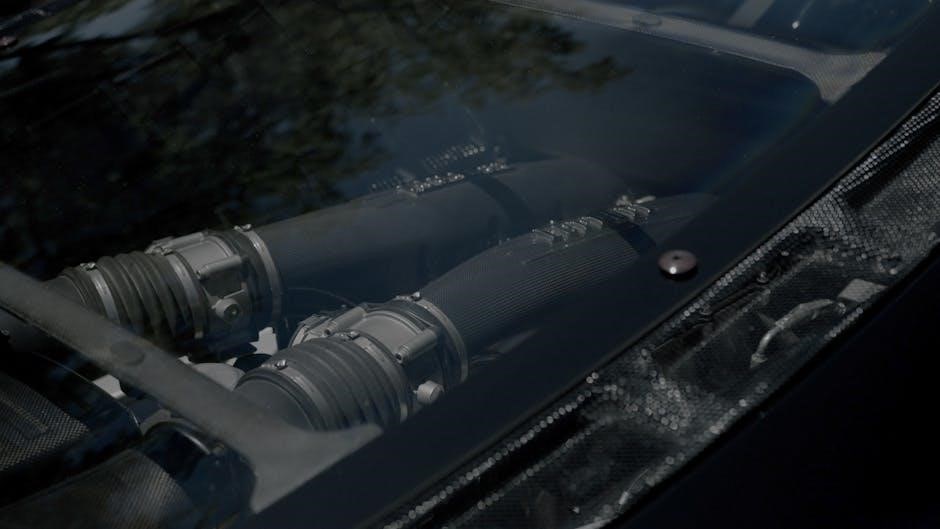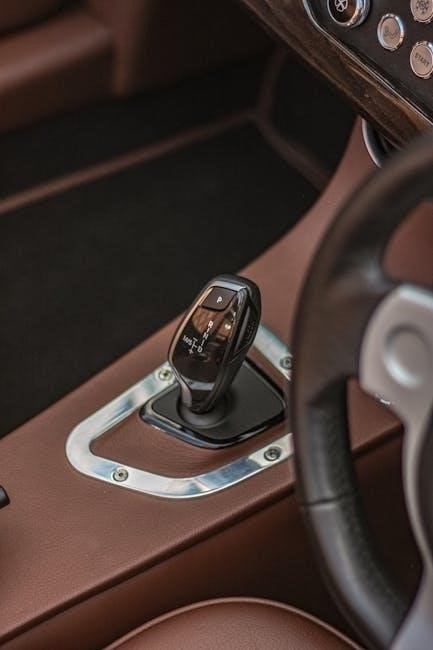The 7-speed manual transmission is a recent innovation in automotive engineering, offering enhanced performance and fuel efficiency. Introduced by Porsche in 2012, it combines smooth shifting with modern gearbox technology, appealing to driving enthusiasts worldwide.
Overview of the 7-Speed Manual Transmission
The 7-speed manual transmission is a sophisticated drivetrain component designed to optimize both performance and efficiency. First introduced by Porsche in 2012 with the 991 generation 911, it represents a significant advancement in manual gearbox technology. This transmission features seven forward gears and a reverse gear, allowing for precise control over engine speed and torque delivery. Its design is based on the PDK dual-clutch gearbox, incorporating similar internal components to enhance smoothness and responsiveness. The additional gear enables lower engine revs at higher speeds, improving fuel efficiency and reducing wear on the engine. Constructed with lightweight materials, the 7-speed manual is both durable and efficient, catering to driving enthusiasts who value the connection between driver and vehicle. It is typically paired with a clutch pedal and gearshift, requiring manual operation to change gears. This setup provides a engaging driving experience while maintaining modern performance capabilities.
History and Development of the 7-Speed Manual Transmission
The 7-speed manual transmission is a relatively recent innovation, with its history tracing back to the early 2010s. Porsche pioneered this technology, introducing the first 7-speed manual gearbox in 2012 with the 991 generation 911. This marked a significant leap forward in manual transmission design, offering an additional gear compared to the traditional 6-speed setups. The development was driven by the need for improved fuel efficiency and smoother power delivery at higher speeds. Since then, other automakers, like Ford and BMW, have explored or implemented 7-speed manuals, with Ford reportedly tasking Getrag to produce a 7-speed manual for the Bronco; The transmission’s design often builds on existing architectures, such as the TR-6060 6-speed, with the addition of a triple overdrive gear to enhance efficiency. Despite its relatively short history, the 7-speed manual has already made a notable impact in the automotive industry, blending tradition with modern engineering advancements.

Key Components of the 7-Speed Manual Transmission
The 7-speed manual transmission consists of a gearbox, clutch, and gearshift linkage. Its internal mechanics include gears, bearings, and synchromesh for smooth shifting. Advanced designs often incorporate lightweight materials and refined engineering for optimal performance;
Gearbox Design and Internal Mechanics
The 7-speed manual transmission’s gearbox is engineered for precision and durability. Its compact design houses seven forward gears, with a focus on optimizing weight distribution and reducing friction. The internal mechanics include a DETENT system that ensures smooth gear engagement and prevents misalignment. The gearbox is typically constructed from high-strength materials, such as aluminum or steel, to withstand the stresses of high-performance driving. The inclusion of triple overdrive gears enhances fuel efficiency by allowing lower engine revolutions at higher speeds; Additionally, advanced lubrication systems are integrated to maintain optimal operating temperatures, ensuring longevity and reliability. These design elements collectively contribute to a responsive and efficient driving experience, making the 7-speed manual transmission a preferred choice for both everyday commuting and spirited driving.
Clutch and Gearshift Linkage System
The clutch and gearshift linkage system in a 7-speed manual transmission is designed for precise control and smooth operation. The clutch pedal operates a master cylinder, which engages or disengages the clutch disc from the flywheel. This system allows the driver to manually manage gear changes. The gearshift linkage connects the gearshift lever to the gearbox, ensuring accurate gear selection. Modern designs often feature self-adjusting clutch pedals and cable-actuated linkages for reduced maintenance. The system is optimized to minimize play and ensure crisp, responsive shifts; Advanced materials, such as high-strength steel and polymer bushings, enhance durability and reduce noise. The clutch and gearshift linkage work in harmony to provide drivers with a seamless and engaging experience, combining mechanical efficiency with intuitive control. This system is critical to the overall performance of the 7-speed manual transmission, enabling smooth acceleration and precise gear transitions.

Driving Experience with the 7-Speed Manual Transmission
The 7-speed manual transmission delivers a refined driving experience with smooth, precise shifts. It offers enhanced control and engagement, making it ideal for both city driving and spirited performance on the open road.

Benefits of the 7-Speed Manual Transmission
The 7-speed manual transmission offers several advantages, including improved fuel efficiency and reduced engine wear. With an additional gear compared to traditional 6-speed transmissions, it allows for lower RPMs at higher speeds, minimizing fuel consumption and enhancing driving comfort. Additionally, the seventh gear provides smoother transitions during acceleration and deceleration, making the driving experience more refined. This feature is particularly beneficial for long-distance driving, where maintaining consistent speeds is crucial. Furthermore, the 7-speed manual transmission is lighter than automatic counterparts, which can improve overall vehicle performance and handling. Its design also ensures better thermal efficiency, contributing to reduced emissions. Overall, the 7-speed manual transmission strikes a balance between performance, efficiency, and driver engagement, making it a preferred choice for enthusiasts and practical drivers alike.
Challenges and Learning Curve
Mastering the 7-speed manual transmission can be challenging, especially for drivers unfamiliar with high-gear systems. The additional gear requires precise coordination between the clutch and accelerator, particularly when navigating stop-and-go traffic or steep inclines. Engaging the seventh gear demands careful technique, as it is typically used for high-speed cruising and may not provide significant benefits in city driving. Additionally, the learning curve is steeper compared to 5- or 6-speed transmissions, as drivers must adapt to a wider range of gear ratios and shifting patterns. Even experienced drivers may find the transition difficult, as the seventh gear introduces new complexities in timing and control. However, with patience and practice, drivers can overcome these challenges and fully utilize the capabilities of the 7-speed manual transmission. Its unique design requires a deeper understanding of gear mechanics, making it less accessible to novice drivers but rewarding for those willing to invest time in mastering it.


Technical Specifications and Engineering
The 7-speed manual transmission features advanced engineering, with lightweight materials and optimized gear ratios. Designed for high performance, it offers improved fuel efficiency and smoother shifting compared to traditional 5- or 6-speed models.
Comparison with Other Manual Transmissions
The 7-speed manual transmission stands out among its counterparts due to its additional gear, which provides lower engine revolutions at higher speeds, enhancing fuel efficiency and reducing wear. Unlike 5- or 6-speed units, the 7-speed offers a broader range of gear ratios, allowing for more precise control over acceleration and deceleration. This makes it particularly advantageous in both urban driving, where frequent shifting is common, and on highways, where maintaining lower RPMs can improve comfort and reduce fuel consumption. However, the complexity of the 7-speed design can lead to a slightly higher production cost and weight compared to simpler transmissions. Despite this, the benefits of reduced engine strain and improved performance make it a desirable option for drivers seeking a balance between efficiency and driving dynamics. The 7-speed manual transmission is a testament to modern automotive engineering, blending tradition with innovation to meet the demands of contemporary drivers.
Fuel Efficiency and Performance

The 7-speed manual transmission is designed to optimize fuel efficiency and performance by providing a broader range of gear ratios. The additional gear allows for lower engine revolutions at higher speeds, reducing fuel consumption and engine wear. This makes it particularly efficient for highway driving, where maintaining lower RPMs can significantly improve mileage. Performance is also enhanced, as the driver can maintain optimal engine speed during acceleration, ensuring smoother and more responsive power delivery. The 7-speed transmission is especially beneficial in vehicles where engine braking is crucial, as it offers precise control over deceleration. Compared to traditional 5- or 6-speed manuals, the 7-speed provides a more refined driving experience, balancing efficiency with dynamic performance. Its advanced design ensures that drivers can enjoy both improved fuel economy and enhanced driving dynamics, making it a versatile choice for modern vehicles.
